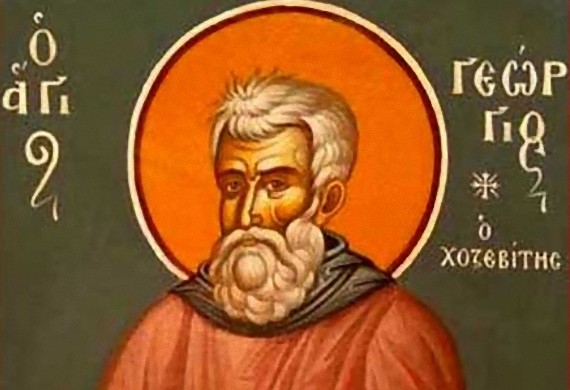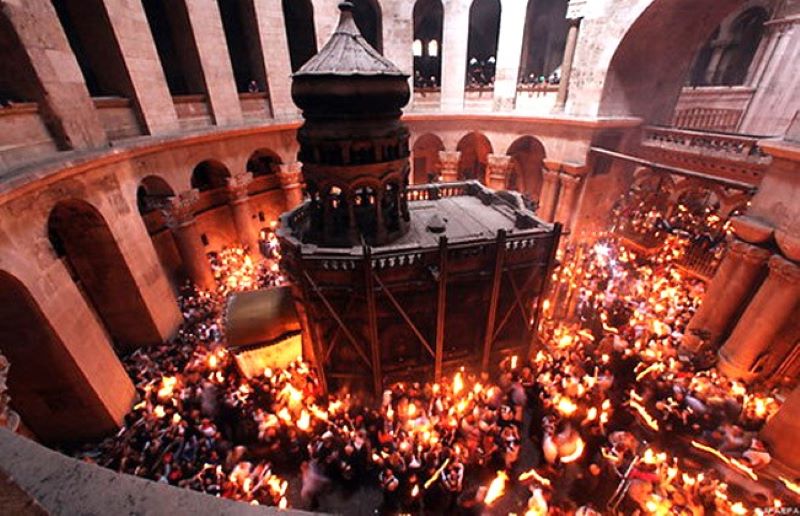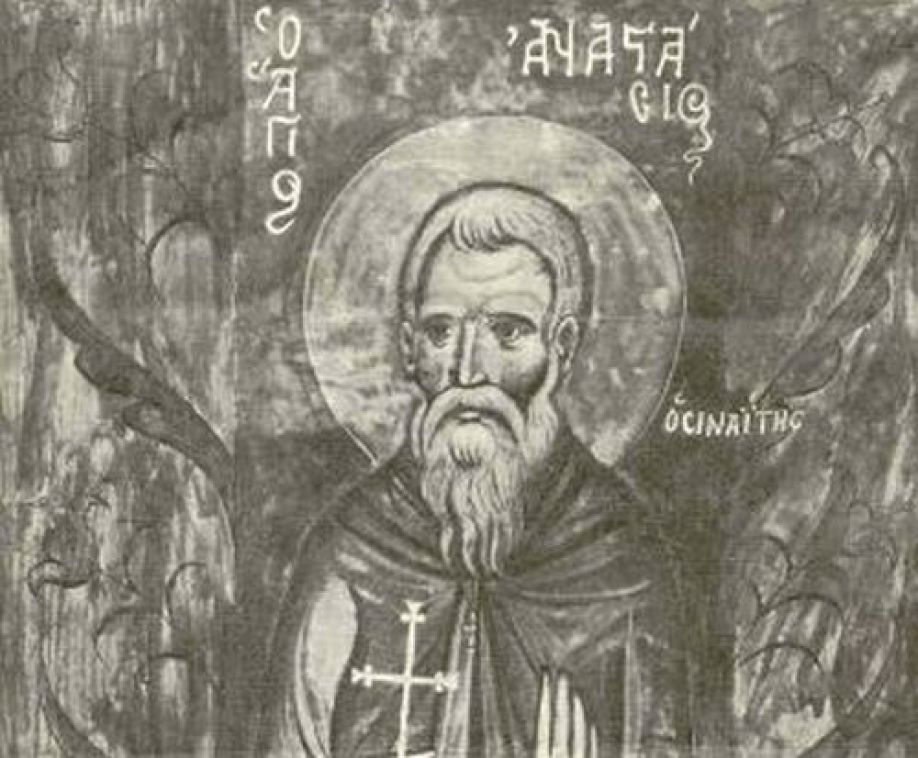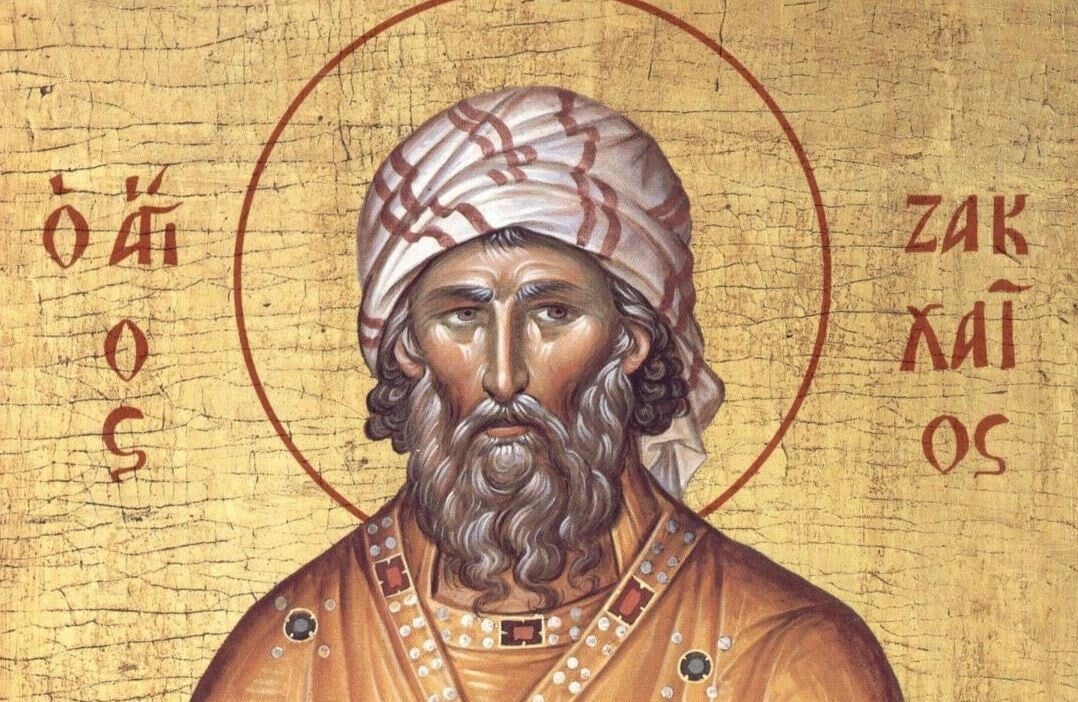Celebrating the memory of Saint George the Hozevite (January 8)


Saint George was born in a village in Cyprus to pious parents. He also had an older brother named Heraclides. So he, while his parents were still alive, went to the Holy Land to worship.
After worshiping, he then went to the Lavra of Kalamonas which was located near the current monastery of Abba Gerasimos in Jordan and there he became a monk. George remained close to his parents. Later his parents died and George was left an orphan.
Then his uncle, who only had a daughter and wanted to make him his son-in-law, received him along with his inheritance. But George did not want to get married and left to his other uncle, who was abbot of a monastery. But because his previous uncle pressured his abbot brother to let George leave the monastery, George left and went to his brother Heraclides in the Lavra of Kalamon. But because he was young he led him to the Monastery of the Most Holy Theotokos, the so-called Hozeva which is located in a deserted and wild ravine and is close to the ancient Roman road, which leads from Jerusalem to Jericho. There George now, after becoming a monk, lived a strictly ascetic solitary life. The reputation of his virtue was great and his holy works taught many. Finally, he peacefully surrendered his holy soul to God.
A few words about the monastery of the Most Holy Theotokos, the so-called Hozeva.
It is located in a deserted and wild ravine and is close to the ancient Roman road, which leads from Jerusalem to Jericho. In the Bible this place is called the Horrat stream and is associated with many historical events.
In this place is the cave in which the prophet Elijah (910 BC) once hid to escape the persecution of the ungodly King Ahab and his pagan wife Jezebel. The zealous prophet stayed in this cave for months and was fed in a miraculous way. Some crows brought him bread and meat morning and night. He drank water from the torrent. However, when the water ran out from here, due to the drought, the prophet left at the command of God to Zarephath of Sidon.
In this cave, after years, the Father of the Theotokos Joachim came and was imprisoned. He stayed here forty days and nights fasting and praying that God would give him a child, because he was childless. During this time, Anna, His wife had also stayed at home and prayed fervently. With tears she begged and asked the Almighty God to solve her infertility.
Joachim deep in prayer, in the cave as it was saved by an ancient tradition: “I do not come down”, said the pious Joachim, “not for a drink, until you visit with the Lord my God and my wish is stink and drink” . And he did not move from there, except when the benevolent God, who always listens to the prayers of his pious children, heard his prayer and with an angel interpreted the joyful message, how he would have a child. The following year Joachim and Anna claimed to have the delighted Mary, the Mother of God. That is why the name Theopatores, that is, ancestors in the flesh of our Saviour Christ, our God.
From a formal order of the Church of Jerusalem we learn that the torrent was the property of Joachim, the father of the Most Holy Theotokos. Here there was a garden of the same and here later a Church was built in the name of the Virgin Mary in which on various days of the year magnificent festivals took place. The monastery of Panagia Hoseva, which is considered one of the oldest monasteries in Palestine, was built on this site.
Thousands of pious souls lived the angelic life of full consecration in this holy Monastery. Saint George from the island of Cyprus, who is known by the surname Hozevitis, spent most of his ascetic life there. The whole area is distinguished for its wildness. And this aread, was no doubt in the mind of the Lord when he told the parable of the man who fell to the robbers and is known as the parable of the good Samaritan. Throughout the gorge there are many caves, which from an early age attracted many travelers.
In one of them, which is located above the Monastery, St Ioannis the miracle worker had once settled, who had been the bishop of Caesarea and then he left the diocese and came to this place to find solitude. This great saint and miracle worker built the church and the monastery in the name of the Virgin Mary and beautified that place in such a way that in a short time thousands of loving souls came to live the angelic life.
The prosperity of the Monastery, in which many Miracles were performed by the Most Holy Theotokos, but also of the surrounding hermitages, which at the beginning of the seventh century hosted more than five thousand souls, was stopped by the Persian invasions. Like a real storm, these wild hordes had set in, slaughtering, burning, desolating everything from where they were passing. At this time the Holy Temple of the Resurrection and all the temples and monasteries of Palestine were destroyed (614 AD)
Source: vimaorthodoxias.gr




